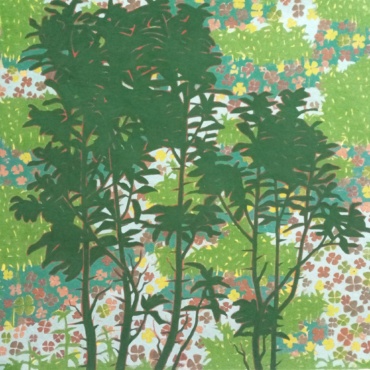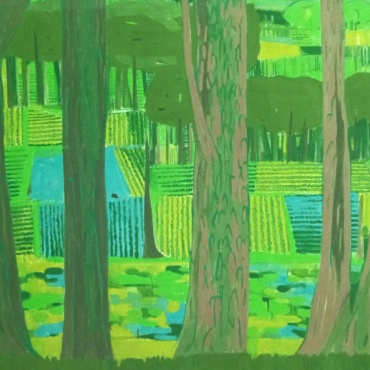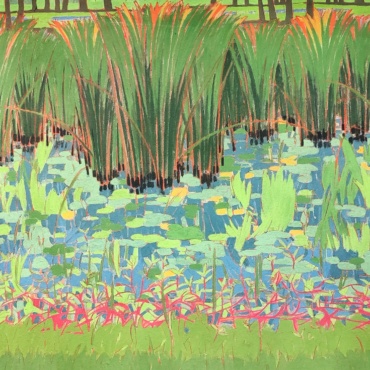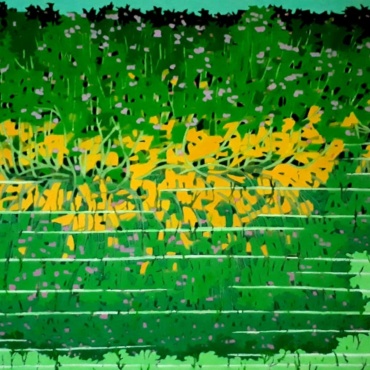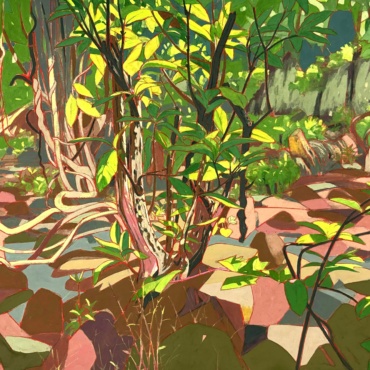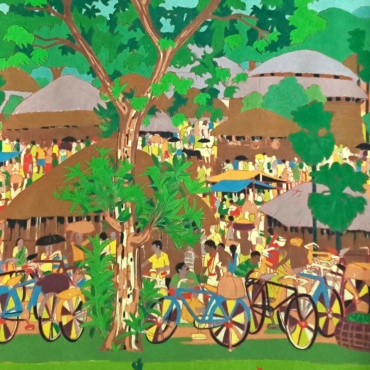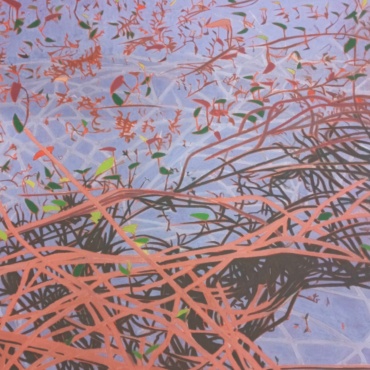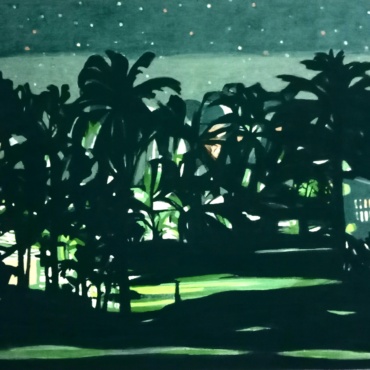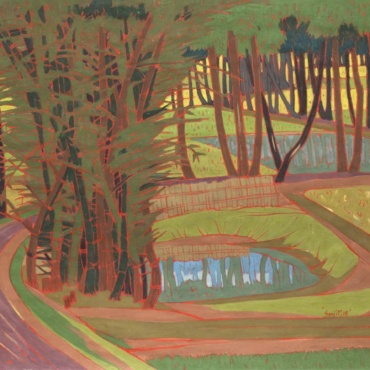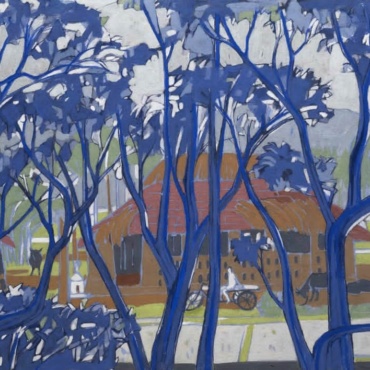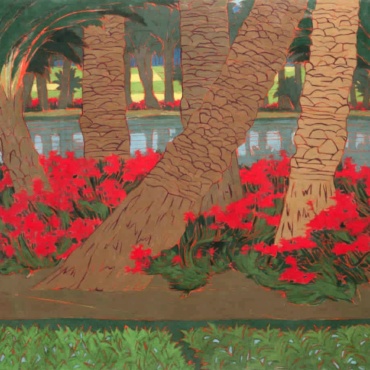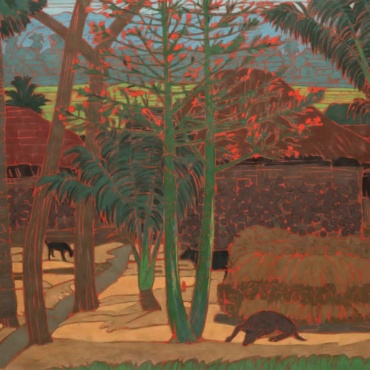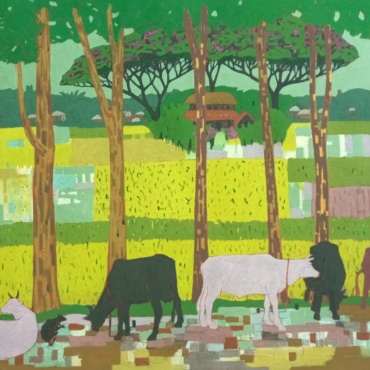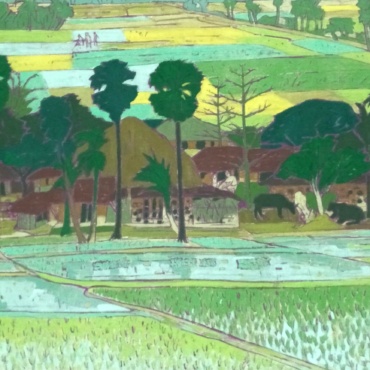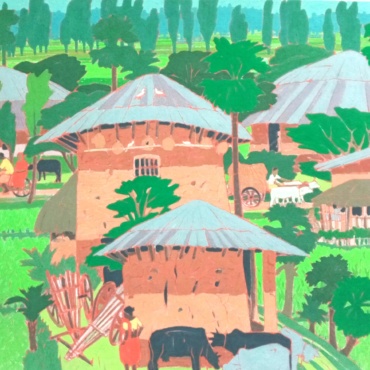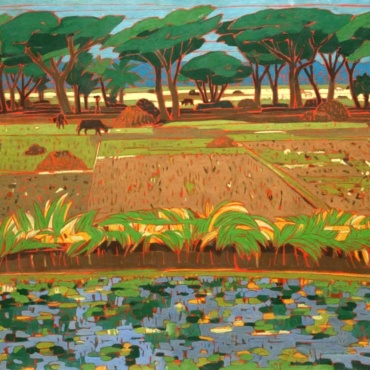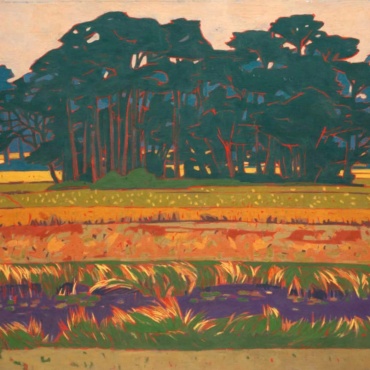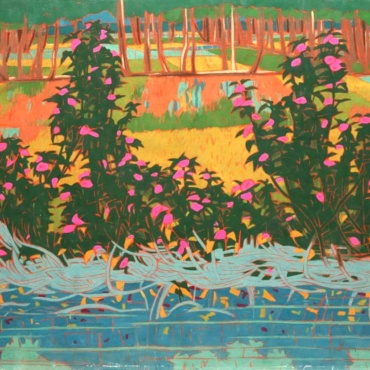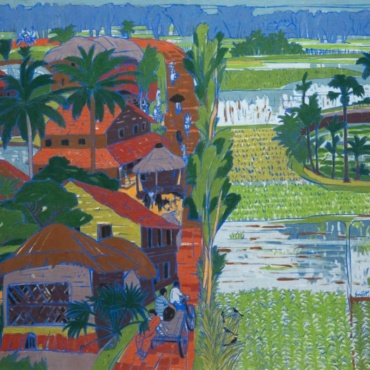Deity of peace
Sujit Das hails from a remote village at Kanthi subdivision in the district of Medinipur, West Bengal. He was born in the year of 1966. He settled in Kolkata since the inception of his life as an artist. But he never felt attracted to the din and bustles of the life in a metro or the overuse of technology. Till today, his mind is fastened to his village where he has spent the days of his adolescence. The harmony of light and shadow in the midst of greeneries, stooping of the leafy branches towards the pond as if in self-offering, their sudden wavering in the wind, the cheerful rhythm of an absolutely unattended wild flower, gleefully flaunting its colourful bonanza on a piece of parched acre land lying on the edge of vast paddy field or the way the rural panorama changes its hues from dawn to dusk–together they constitute the soul of his paintings. Nature, which is basically placid is the prime theme of his works. It seems to have nothing to hurry about, no urge to change its appearance. Yet, at some point of time, the dusky gleam illuminates its face–and the glow gradually mingles intensively with shadow. But this serene, tender entity of nature is not devoid of human touch. The vibrant fair ground or the bicycles being scattered around a sea beach appear to wait eagerly for someone.
It leaves no room for doubt that Sujit primarily portrays rural landscapes and they showcase his intellect and skill. In 1990, he procured a bachelor degree with first class from the Department of Visual Arts with painting as his subject. He studied in the Government College of Art and Craft. He did not keep himself confined in the specific style and method of collage curriculum, later he opted different media and used various paints and colours to unfold his self-expression. In case of his tempera, we observe that he had pasted a piece of cloth with glue on a mount board and applied a type of base made up of white ink on it and started painting. Earlier this method was generally applied to the Pahari Miniature Paintings. And it is to be noted that when paints were used scientifically on it they lasted longer retaining all its brightness. Sujit prefers earthen colours to commercial ones, but he opts for fevicol to avoid fungal spoilage instead of tamarind seed glue as used earlier. Beside tempera, he shows his proficiency in using water colour and acrylic. Whatever might be his medium, his thematic interest centers around nature and natural landscapes as well.
Sujit Das, who was awarded in the annual exhibition of the Birla Academy in 1996 has now become an artist of repute in the world of Indian Painting. His debut solo exhibition was organized at the Mahua Art Gallery in Bengaluru in the year of 2015, though his paintings have been exhibited in various galleries of our country before and after his solo exhibition. His exhibitions took place in Birla Academy, Alternative Art Gallery, Chemould Art Gallery, Samakal Art Gallery, Shree Art Gallery, Debovasha in Kolkata, Lalit Kala Academy in Delhi, Gallery One in Gurgaon and Jahangir Art Gallery in Mumbai.
These days, our country and the world as well are undergoing a rapid change. Our thoughts and intellect are gradually losing concentration because of the continuous development of technology and the magical illusion created by Artificial Intelligence. We can no longer remain steady. Our younger generation find it easier to surf net than to engage their mind in introspection. We also tend to lose our language of expression after entering the labyrinth of information. In suchlike ambience, Sujit can remain indifferent and steady without paying any heed to the changes and haste of his immediate environment, what can an artist do but focus on his own subject and theme? His academic career did not deprive him of modernity, rather inspired him to remain engrossed in his creation of the pictorial narrative of peace while placing him far from the madding crowd. So, his exhibition on the website of Debovasha goes by the name of ‘Deity of Peace’, as nature is the sole creator of peace and auspiciousness. Earlier, a graphic art created by the renowned artist, Sanat Kar shared the same name which was given by the artist himself. Another famous graphic artist, Haren Das essayed to create the varied aspects of the quotidienne life of Bengal. The simplicity and spontaneity of the life of rural Bengal finds expression through his innumerable woodcuts, etchings and linocuts. Debovasha is organizing an exhibition of Sujit Das called the ‘Deity of Peace’ on its website to show the sincere endeavour of a much younger artist who deftly depicts the calm and serene charm of rural Bengal through Tempera, water colour and acrylic. Let us all set foot in the world of Sujit…


